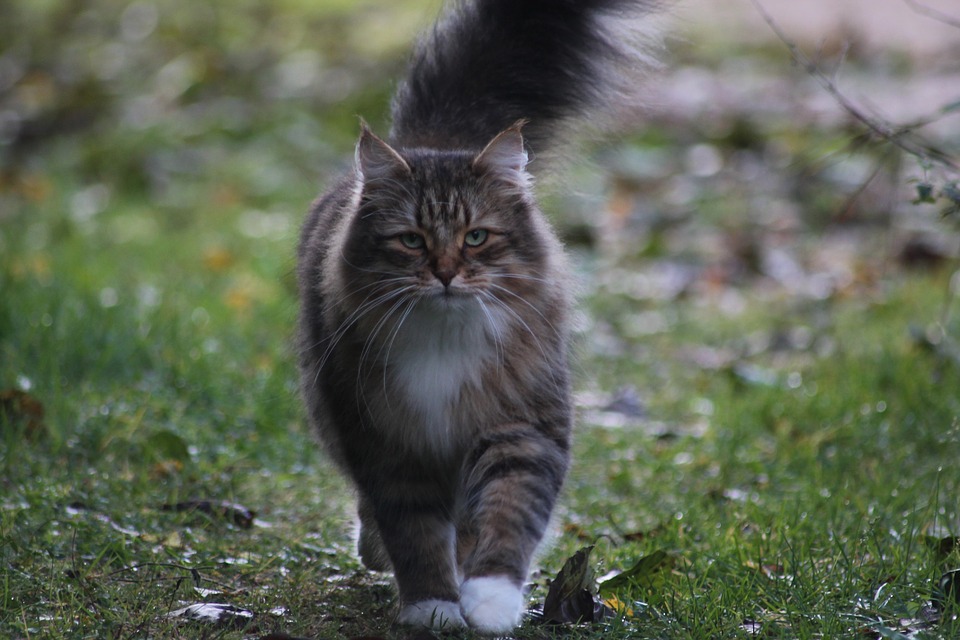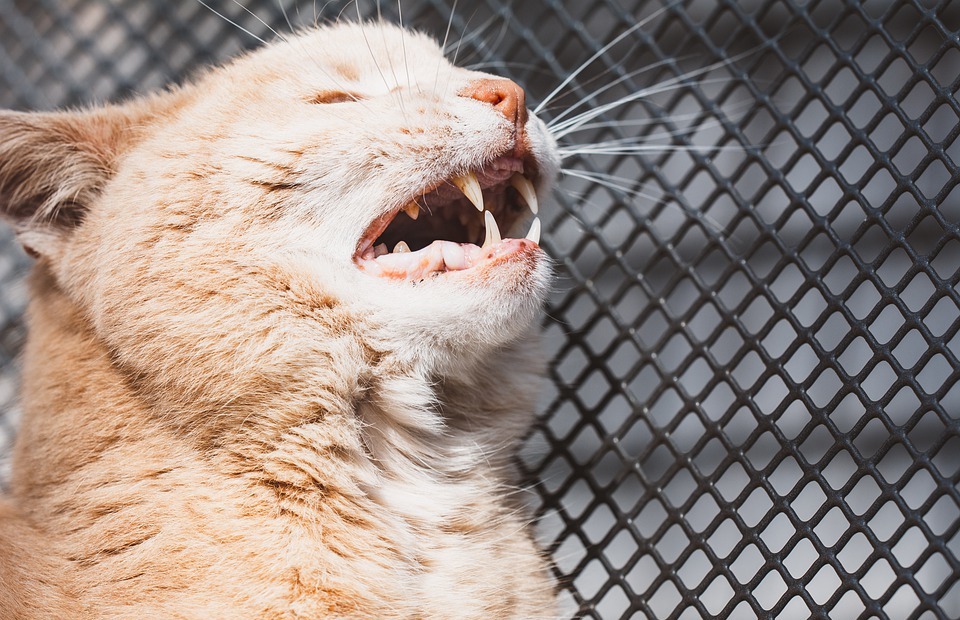This comprehensive exploration delves into the intricate world of feline sexuality, shedding light on the complexities of same-sex behaviour in cats. We'll unravel the science behind animal sexual orientation, examine the various expressions of same-sex behaviour in our feline companions, and dispel common misconceptions. Prepare to gain a nuanced understanding of this intriguing aspect of cat behaviour.
Part 1: Understanding Animal Sexuality

1.1 Defining Sexual Orientation in the Animal Kingdom
- While the term "homosexuality" is widely used in human contexts, applying it to animals is often debated due to the difference in cognitive capacity.
- Animals lack the conscious awareness of their sexual orientation as humans do.
- Instead of "homosexuality," scientists typically describe observed behaviours, focusing on the biological and environmental factors that influence them.
1.2 Sexual Orientation vs. Sexual Behaviour
- It's crucial to distinguish between sexual orientation, a consistent pattern of attraction, and sexual behaviour, the outward expression of those attractions.
- In animals, sexual behaviour is often influenced by hormonal fluctuations, particularly during mating seasons.
- This means that an individual's sexual behaviour may not always reflect their underlying sexual orientation.
Part 2: The Biology of Sexual Behaviour in Cats

2.1 The Role of Hormones
- Cats, like all mammals, are influenced by hormones that regulate their sexual behaviours.
- Testosterone, a male sex hormone, plays a crucial role in male sexual behaviour, including mounting and vocalizations.
- Estrogen, a female sex hormone, is involved in female sexual behaviours such as lordosis (a posture where the female presents her rear for mating) and vocalizations.
- Hormonal fluctuations can lead to temporary changes in sexual behaviour, including same-sex interactions.
2.2 The Influence of Genetics
- Recent research suggests that genetic factors may influence sexual behaviour in animals, including cats.
- While the specific genes responsible for same-sex behaviour in cats are still under investigation, studies are underway to understand their potential role.
- It's important to note that genetic predisposition does not mean predetermined behaviour.
Part 3: Understanding Same-Sex Behaviour in Cats
3.1 Diverse Expressions of Same-Sex Behaviour
- Mountings: One cat may mount another, regardless of gender, often with vocalizations and pelvic thrusting. These behaviours are frequently observed in both male and female cats.
- Affectionate Displays: Cats may express affection towards another cat of the same sex through grooming, cuddling, rubbing against each other, and playing together.
- Mutual Grooming: Cats are known to groom each other, a behaviour that can be seen between cats of the same sex.
- Scent Marking: Cats of both genders use scent marking to communicate with each other. Same-sex pairs may engage in scent marking to establish their bond.
- Vocalizations: Cats may communicate with each other through meows, purrs, and chirps, and these vocalizations can be observed between same-sex pairs.
3.2 The Importance of Context
- It's essential to understand the context in which same-sex behaviour occurs.
- Social dominance, playfulness, and affection can also manifest as behaviours resembling same-sex sexual interaction.
- Interpreting feline behaviour requires careful observation and consideration of the context in which the behaviour occurs.
Part 4: Misconceptions and Challenges
4.1 Addressing Common Misconceptions
- "Homosexuality is unnatural in animals." This statement is based on a misunderstanding of animal behaviour and evolution. Same-sex behaviour has been observed in hundreds of animal species, including birds, mammals, and reptiles, and it is not considered unnatural. It is a natural part of the diversity of life.
- "Cats only engage in same-sex behaviour for lack of a mate of the opposite sex." While the availability of potential mates can influence behaviour, same-sex interactions have been observed in cats even when opposite-sex partners are present.
- "Same-sex behaviour is a sign of psychological distress." There is no scientific evidence to support this claim.
- "Cats don't understand what they are doing." Cats have complex brains capable of learning and experiencing a wide range of emotions. They are capable of forming strong bonds with other cats, regardless of gender.
4.2 The Importance of Scientific Understanding
- Scientific research plays a crucial role in dispelling misconceptions and promoting a more accurate understanding of same-sex behaviour in animals.
- Studies continue to reveal the complexity of animal sexuality, highlighting the importance of respecting the natural diversity of behaviour.
Part 5: Respect and Inclusivity
5.1 Creating a Safe and Inclusive Environment for All Cats
- Just like with humans, it's crucial to create a safe and inclusive environment for all cats, regardless of their behaviour.
- Accepting and respecting feline individuality promotes a harmonious relationship between humans and cats, fostering trust and understanding.
5.2 Challenging Prejudice and Misinformation
- Addressing misconceptions and challenging prejudice against same-sex behaviour in animals is essential.
- Educating others about the natural diversity of animal behaviour promotes a more compassionate and scientifically accurate understanding of our feline companions.
Part 6: Further Considerations
6.1 The Role of Socialization and Environment
- Socialization plays a crucial role in shaping feline behaviour, including sexual behaviour.
- Cats that are raised in environments where they are exposed to a variety of individuals, both male and female, are more likely to develop positive social interactions.
6.2 The Importance of Veterinary Care
- If you have any concerns about your cat's behaviour, it's always a good idea to consult a veterinarian.
- Veterinarians can assess your cat's overall health and provide guidance on managing any behavioural issues.
Part 7: FAQs
7.1 Does same-sex behaviour in cats mean they are "gay"?
- As discussed earlier, applying human concepts of sexual orientation to animals is not scientifically accurate.
- Instead of focusing on labels, it's more productive to understand the context and motivations behind observed behaviours.
7.2 Can I encourage or discourage same-sex behaviour in my cat?
- It's not advisable to attempt to influence or change a cat's natural behaviour.
- Creating a safe and loving environment for your cat is the best way to support their well-being.
7.3 Can same-sex cat pairs breed?
- No, same-sex cat pairs cannot breed.
- Reproduction is dependent on the interaction of male and female reproductive systems.
7.4 Is same-sex behaviour in cats common?
- It's difficult to determine the exact prevalence of same-sex behaviour in cats, as it is not always easily observed.
- However, studies have shown that it is a natural and normal part of feline behaviour.
7.5 Should I be concerned if my cat shows same-sex behaviour?
- If your cat is healthy and displaying other normal behaviours, there is no reason to be concerned about same-sex interactions.
- If you have any concerns about your cat's behaviour, it's always a good idea to consult a veterinarian.
7.6 How can I learn more about same-sex behaviour in animals?
- Numerous scientific journals and books have been published on the topic of animal sexuality.
- Reputable animal welfare organizations and academic institutions can provide valuable resources.
Everyone is watching

Are Cat Ribs Flexible? Understanding Their Anatomy
CATS & KITTENSThis article delves into the fascinating world of feline anatomy, exploring the flexibility of cat ribs and ho...

Can Cats Eat Bananas? (Everything You Need to Know)
CATS & KITTENSThis article dives into the intriguing question of whether cats can safely enjoy the sweet, yellow fruit, bana...

Cat Lifespan: How Long Do Cats Live?
CATS & KITTENSThis comprehensive guide explores the factors influencing the lifespan of our feline companions, providing ins...

Can Cats Get COVID-19? What You Need to Know
CATS & KITTENSThis article will delve into the fascinating world of feline COVID-19 susceptibility. We'll explore whether ca...

Can Cats Eat Eggs? A Complete Guide to Egg Safety for Your Feline Friend
CATS & KITTENSWhen it comes to treating our furry companions, we all want to ensure we're doing what's best for them. Eggs...
